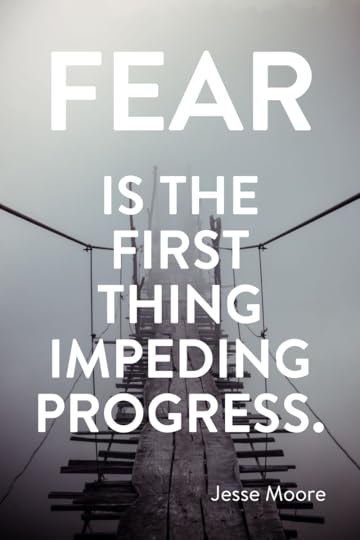Scott Allen's Blog
December 14, 2016
FEAR
November 29, 2016
Occam’s Razor
November 28, 2016
To Improve Customer Service, Respect Your Customer’s Time
The #1 way to systematically improve customer service is this:
Embed respect for the customer’s time into your processes and practices.
For example:
 In a sit-down restaurant, minor errors in an order are mildly annoying, but can usually be dealt with fairly quickly. When it’s drive-through or take-out, and the customer won’t discover the problem until they get home, it’s critical to double-check the order before handing it to them.
In a sit-down restaurant, minor errors in an order are mildly annoying, but can usually be dealt with fairly quickly. When it’s drive-through or take-out, and the customer won’t discover the problem until they get home, it’s critical to double-check the order before handing it to them.In a restaurant, some items are time-sensitive. If someone asks for extra cream, they’re not drinking their coffee until they get it. If they want honey for their pancakes instead of syrup, they’re not going to eat them until they get it. Make it a practice to take care of any extras before the food for which it’s needed is served.
Here’s an example of someone doing it right: Men’s Wearhouse has tailors on-site at all of their stores. If all you need is a pants hem (which is always needed on dress slacks), they take care of it , and you only pay for any given alteration once. That saved me one time when I had to wear my MW tux and had gotten a little bit big for them. The tailor opened up a few minutes before the store opened, let out the waist a couple of inches while I waited, and didn’t charge me for it.
Another example: Discount Tire will check and rotate your tires (purchased from them, of course) for free, while you wait, pretty much no matter how busy they are. For even more time savings, you can make an appointment online.
Do you know of another company that’s doing this well? Share in the comments below.
May 25, 2016
Social Media Is a Social Equalizer
I saw a recent tweet that reminded me of something we wrote about in The Virtual Handshake:
A4 Thanks to social media, people with innovative ideas, disabilities have gotten a stronger voice #bufferchat
— Creativity with Kay (@creativitywithk) May 25, 2016
In the process of researching The Virtual Handshake, I had the pleasure of meeting scientist, researcher and disabilities activist Gregor Wolbring and discussing this topic with him at length. The following is an excerpt from Chapter 3. Keep in mind as you’re reading this that it was written back in 2004:
Tim Berners-Lee, one of the creators of the Internet, said, “The power of the Web is in its universality. Access by everyone regardless of disability is an essential aspect.” When you are meeting people virtually, disabilities that would hinder or prevent face-to-face social interaction can become a nonissue.
Dr. Gregor Wolbring
Dr. Gregor Wolbring is a biochemistry and bioethics professor at the University of Calgary and founder of the International Centre for Bioethics, Culture and Disability. He offers information worldwide through his Web site, virtual discussion group, and online courses. He develops most of his contacts virtually.
A wheelchair user himself, he says, “I find online interaction very empowering because it allows me to reach more people and help more people than I would ever be able [to] without it. I just hope it will become more broadly available and the digital divide for disabled people becomes smaller.”
Wolbring sees virtual interaction as a social equalizer for disabled people in five key ways:
It allows disabled people to interact with so-called nondisabled people without having to reveal their nonnormative body structure or functioning. This allows disabled people with low self-esteem and with high fears of rejection to communicate with the world.
It allows disabled people to interact with people all over the world, even if they are not able to travel because of financial or mobility restrictions.
Virtual learning allows the teaching of disabled people who otherwise have no access to education. Less than 2 percent of disabled people in developing countries are in regular schools.
It allows for dissemination of knowledge that would be too expensive for disabled people to obtain otherwise.
It allows for more efficient advocacy.He notes that every Web site designer should be aware that many Web sites and Internet tools are still not disabled accessible. The World Wide Web Consortium provides free accessibility tips and tools.
How has social media impacted your life in this context? Has it opened up new possibilities and relationships for you? Please share in the comments–I’d love to hear your story.
April 1, 2016
Nothing But the Dog in Me
I couldn’t get this song out of my head this morning. Bow wow wow, yippie yo, yippie yeah. Bow wow, yippie yo, yippie yeah.







